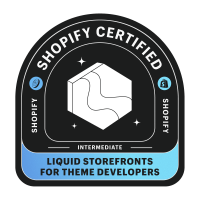
What does Magento to Shopify migration look like?
Magento and Shopify are known as two titans in the ecommerce platform world, each with its strengths and user base. Shopify is currently the most used ecommerce platform and that’s why many Magento to Shopify migrations happened in the last few months.
Magento is great for businesses looking for a customizable platform requiring a certain level of technical expertise. On the other hand, Shopify’s simplicity and wide range of features empower businesses of any size to launch stores and give long-term growth support, and that’s why it makes the perfect solution and also the reason why a brand should migrate from Magento to Shopify. But, let’s be honest, the migration process is not an easy task to do.
Table of Contents
A good Magento to Shopify migration plan is half the work
If you’ve decided to switch your store from Magento to Shopify, congratulations — it is a big deal! We’re a Shopify expert agency with extensive experience in migrations. Let’s slow things down and discuss how we can make this transition smooth and straightforward.
Before anything else happens, it’s important to go through the current Magento setup. Take a closer look at data, every product that sells, and every bit of customer information a brand has. Think of this step as sorting out what to pack for a move—you want to bring what you need and leave behind what you don’t.
After this step comes a detailed step-by-step plan, like a map that shows the route from the old Magento store to the new Shopify site. This “map” will show every task that needs to be done, who’s going to do it, and when it should be completed. It’s a clear, easy-to-follow plan that will guide the whole migration from start to finish.
We’ve been through the Magento to Shopify migration process many times, so we’re familiar with the process. But we always keep our eyes wide open to make sure nothing is missed.
The most important part – migrating data
Moving data is a big part of Magento to Shopify migration. The process isn’t always the same, but here’s how we usually handle it:
Step 1
First, we prepare all the data that needs to move. This includes everything you have on your current Magento store—like what you’re selling (your products), who you’re selling to (your customers), and all the sales you’ve made (your order history). We organize it neatly so that nothing gets lost in the shuffle.
Step 2
Then, we start the transfer process. We take extra care to pack up your data securely and move it over to Shopify. Our goal is to ensure every single piece of information is transferred safely. We use special tools that help us move data smoothly. We know how to handle fragile items.
Step 3
Once your data is in Shopify, we double-check everything. We want to make sure all your products, customer details, and order history are in the new system just like they were in Magento—no data left behind and nothing out of place.
The new Shopify home
Aligning Shopify’s advanced features with the brand’s unique qualities starts with selecting a theme that reflects brand identity and establishing a visual appeal that connects with its audience.
Your store becomes highly functional by integrating Shopify’s wide array of apps and features, each chosen to boost operational efficiency and improve the user experience from front to back. This includes everything from inventory management to engaging customer interaction tools.

Making sure it all works
After moving your store from Magento to Shopify, the real work begins with testing to make sure everything works perfectly.
First, we check every part of your Shopify store carefully. This means making sure all your products are listed correctly, payments go through smoothly, and customers can easily sign up for newsletters or get in touch with you.
Next, we look at every link on your website to ensure that it leads to the correct destination. Working links help people navigate your store more easily, which increases their likelihood of being happy with their visit.
If we find anything that’s not working right, we fix it quickly. Knowing Shopify well helps spot and sort out problems quickly, so your store can start strong.
Finally, we do one last thorough check of everything. This makes sure we haven’t missed anything and that your store is ready to welcome customers. This careful checking means your store opens with everything set up for success.
- Best ecommerce agency in US – Top 10
- Ecommerce automation – work smarter
- The % split – paid ads vs SEO vs organic social in ecommerce
- How to reduce Customer Acquisition Cost (CAC)
- Ecommerce automation and Shopify Flows
Magento to Shopify migration – going live
Launching a new Shopify store marks a significant milestone, but it’s really just the start of a new chapter. As you begin this journey, you should get a team that will remain by your side, committed to providing the support and guidance you need to thrive.
Even after your store is up and running, the team should remain on standby, ready to assist with any questions or hurdles you encounter. As you settle into your new Shopify store, it’s natural to face some challenges along the way. The team’s role is to help identify and overcome these obstacles swiftly.
We’re happy to say that with our extensive Shopify knowledge, we can quickly pinpoint issues and implement fixes, minimizing any impact on business operations.
Remember that your needs will change as your business grows and evolves. Although Shopify gives you the maximum performance, you might need to add new functionalities, optimize your store’s performance, or upgrade to Shopify Plus.
Are store migrations always stressful?
A Magento to Shopify migration doesn’t have to be a headache. With the right team by your side, it can be a walk in the park. We’re those folks—the ones who would make the Magento to Shopify migration smooth and easy. So if you’re ready to switch to a platform that’s all about making ecommerce easier and more efficient, let’s chat!

